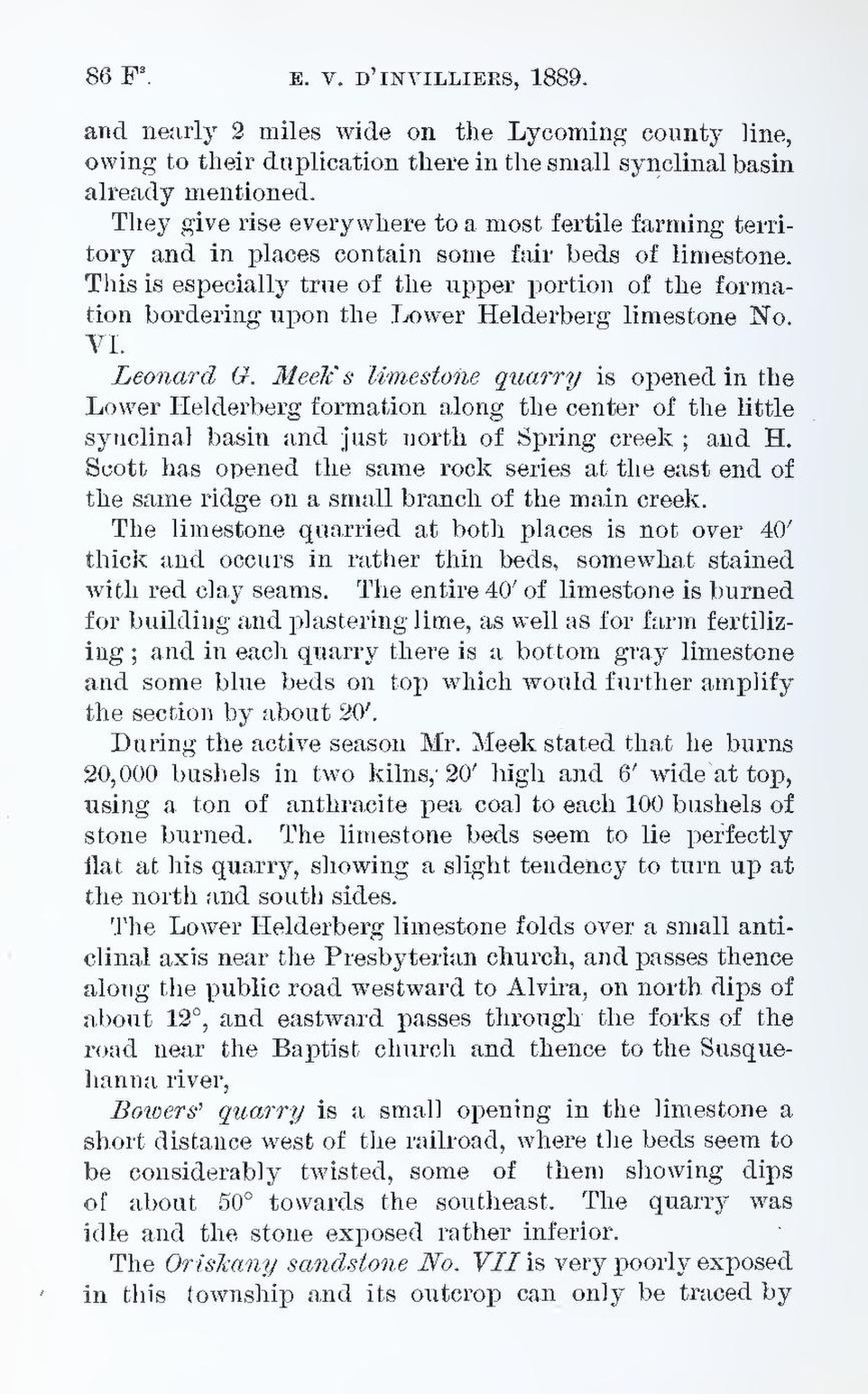and nearly 2 miles wide on the Lycoming county line, owing to their duplication there in the small synclinal basin already mentioned.
They give rise everywhere to a most fertile farming territory and in places contain some fair beds of limestone. This is especially true of the upper portion of the formation bordering upon the Lower Helderberg limestone No. VI.
Leonard G. Meek’s limestone quarry is opened in the Lower Helderberg formation along the center of the little synclinal basin and just north of Spring creek; and H. Scott has opened the same rock series at the east end of the same ridge on a small branch of the main creek.
The limestone quarried at both places is not over 40′ thick and occurs in rather thin beds, somewhat stained with red clay seams. The entire 40′ of limestone is burned for building and plastering lime, as well as for farm fertilizing; and in each quarry there is a bottom gray limestone and some blue beds on top which would further amplify the section by about 20′.
During the active season Mr. Meek stated that he burns 20,000 bushels in two kilns, 20′ high and 6′ wide at top, using a ton of anthracite pea coal to each 100 bushels of stone burned. The limestone beds seem to lie perfectly flat at his quarry, showing a slight tendency to turn up at the north and south sides.
The Lower Helderberg limestone folds over a small anticlinal axis near the Presbyterian church, and passes thence along the public road westward to Alvira, on north dips of about 12°, and eastward passes through the forks of the road near the Baptist church and thence to the Susquehanna river.
Bowers’ quarry is a small opening in the limestone a short distance west of the railroad, where the beds seem to be considerably twisted, some of them showing dips of about 50° towards the southeast. The quarry was idle and the stone exposed rather inferior.
The Oriskany sandstone No. VII is very poorly exposed in this township and its outcrop can only be traced by
